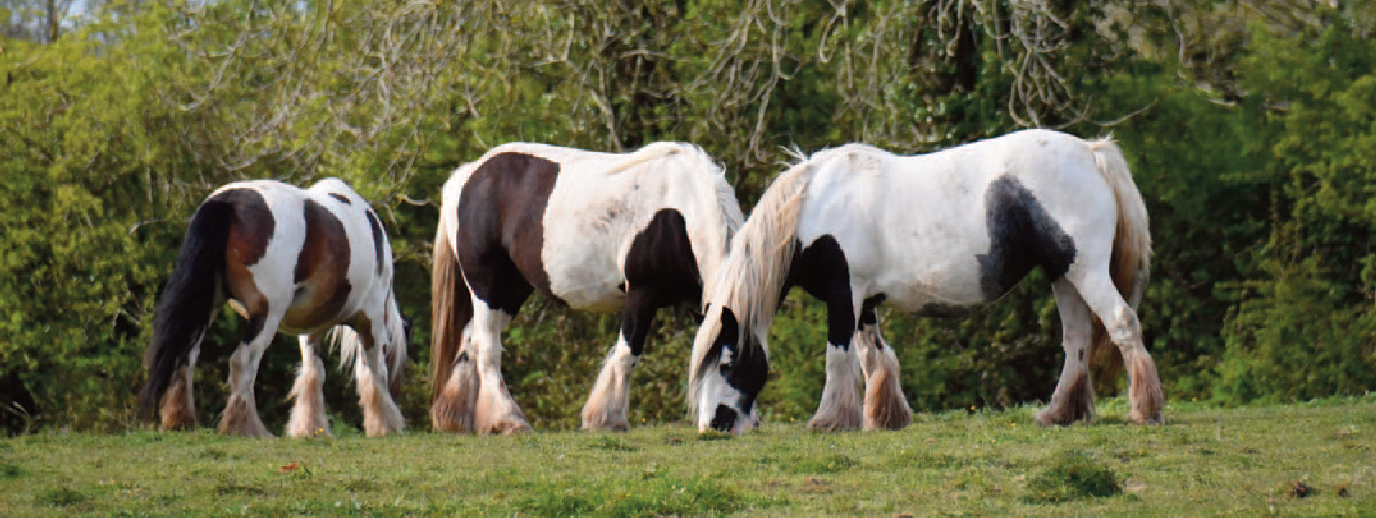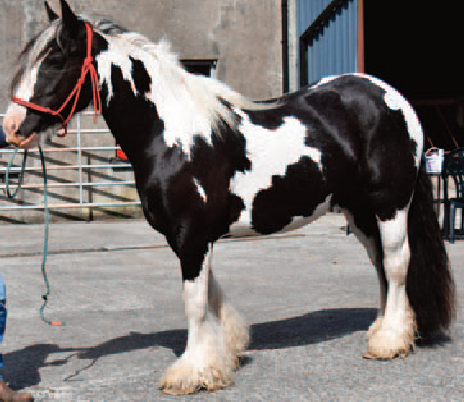

The Irish Cob is a native Irish breed and although it has a long history the Studbook was only officially founded in 1998. Prior to this linages were passed down verbally from generation to generation. The breed is referred to worldwide by many different names such as Gypsy Cob, Gypsy Horse, Gypsy Vanner and Irish Tinker.
The Irish Cob breed was developed by the Travelling Community in Ireland. For hundreds of years these sturdy, hardworking horses pulled wagons and carts throughout Ireland, Britain and Europe. The breed adapted to be strong and versatile. They needed to be gentle enough to be handled by children but sturdy enough to pull a wagon all day.


General Appearance – The Irish Cob is compact and powerful, ample both in muscle and bone, yet, with an ability to perform as a good all-purpose animal. Some Irish Cobs tend to be more “stocky” than others. The Irish Cob is well balanced and proportioned, standing straight and square and offering an imposing appearance.
The head, which should be held proudly should be carried on a powerful and arched, well “set on”, neck. The neck should appear to “carry on” through good withers and to finish at the start of the back (this feature should be particularly evident in stallions). The back which should be short and straight should slope gently upwards to a well muscled croup (the back bone/spine or the hip bones should not be apparent). The croup, which is quite high and generous should have both croup muscles well defined, the top of the quarters being exceptionally well muscled, broad and ample. The angle of the spine from the croup to the tail should slope gently downwards and should not be exaggerated, this allows for a high, well “set on”, tail and contributes to good well rounded quarters.
Irish Cobs are from medium weight to heavy weight, (Some allowance in bone measurement can be made for mares and geldings only). Irish Cobs with their unique action, luxuriant hair and feathering and the large range of colours available, combine to present a beautiful and varied sight to see when turned out at their best, particularly when in motion.
The Irish Cob should possess a docile and willing nature, with a friendly disposition towards humans and other animal species. Displays of aggressive and threatening behaviour such as ears back, kicking, biting, rearing and not being under control of the handler, will result in expulsion from Approval Inspection and the Show Ring.
Their height should be under 170cms. Irish Cobs can be any solid colours including black, bay, brown, chestnut, palomino, grey and roan. In addition they can be any solid colours and white body markings i.e. coloured. Irish Cobs which have white markings on the underbelly are described as Splashed or Blagdon.
Horse Sport Ireland also hold the studbook for the Irish Part-Bred Cob; the part bred can be a cross of any horse/pony breed and a studbook registered Irish Cob. The ICPB is a leisure horse capable of participating in all equestrian disciplines.
The breeding programme aims to preserve and improve the breed as per the characteristics and traits of the breed.
